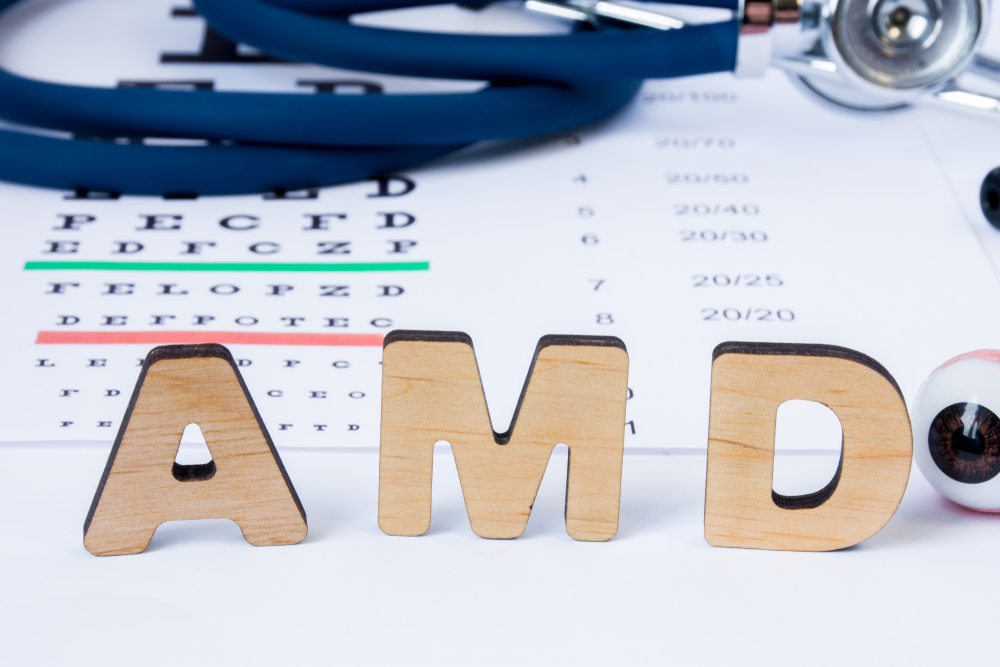
Age-related macular degeneration (AMD) affects roughly 20 million people in the United States. This disease is the most common cause of permanent vision loss among people over 65. In this blog, the esteemed eye team at Wiles Eye Center explain the differences between the two types of AMD: dry and wet.
Dry AMD
Also known as atrophic AMD, dry AMD occurs when the macula (the middle of the retina) gradually breaks down and gets thinner. This deterioration causes blurry central vision over time and can make reading or recognizing faces more difficult, especially in environments with lower light.
About nine out of 10 patients with macular degeneration have dry AMD. Although this condition cannot be “cured,” eye doctors can recommend lifestyle modifications such as eating nutrient-rich food, wearing UV-protective sunglasses, and not smoking or vaping.
Wet AMD
Advanced neovascular AMD, better known as wet AMD, is far less common than dry AMD but is also that much more dangerous. Dry AMD can develop into wet AMD in later stages, with many patients never knowing that they had dry AMD until the symptoms became more severe.
Patients with wet AMD are in jeopardy of losing their vision in a matter of months instead of slowly over many years. It usually develops when abnormal blood vessels generate in the eye, causing blood to leak into the retina. It also leads to scarring on the macula, which can seriously impair central vision.
Diagnosing AMD
Symptoms for dry macular degeneration can be subtle enough that they go unnoticed by the patient, especially early. Eye exams, with tests including Amsler grid, OCT, and angiography, allow an eye doctor to catch the signs so that the patient can take the appropriate steps to manage this condition.
The rapid vision loss associated with wet macular degeneration is usually easier for a patient to perceive. Unfortunately, some people still procrastinate on seeking care when prompt treatment is critical for preserving some sight. If you notice a sudden change in vision, do not hesitate to make an appointment to receive a diagnosis — even if it ends up being something other than AMD.
Treating AMD
Even though AMD cannot be cured, treatment is the best way to preserve vision as much and as long as possible. Laser treatments can help to seal leaky, abnormal blood vessels, and anti-VEGF injections can stop the formation of these vessels.
If you have been diagnosed with dry or wet AMD, or you are overdue to have an eye exam that confirms the health of your eyes, seek care from Missouri’s best team of eye doctors. To make an appointment at Wiles Eye Center, please call 816-455-2020 (Kansas City) or 816-279-7015 (St. Joseph) today.

Comments are closed here.